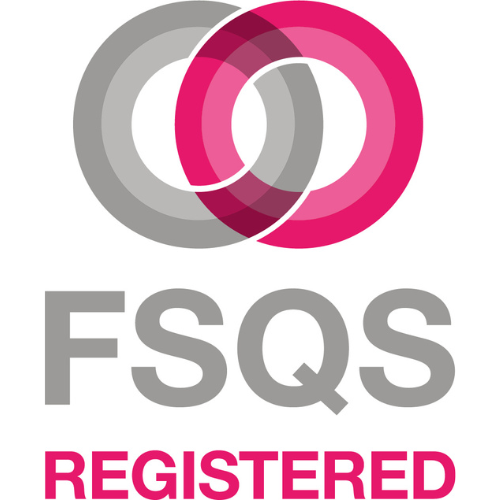Following closure of the consultation period for the FCA Consultation Paper GC20/3 “Guidance for firms on the fair treatment of vulnerable customers” we look at the key issues for firms as they start preparing for the Policy Statement expected at the end of this year or early next year. Historically little changes between Consultation and Policy so starting now will make implementation of changes less of a spike in activity, causing less frustration and stress for all.
With the FCA estimating that almost 50% of consumers show at least one characteristic of vulnerability, it is clear that they expect firms to make any changes that are ultimately required a core part of their business processes.
Background
Vulnerable Customers has been a key area of focus for the FCA for several years, and it was an area which prominently featured in this years’ business plan, and several business plans that proceeded it.
The reason why the FCA is focusing so much on this topic is that research has highlighted that the fair treatment of vulnerable customer is not yet being consistently embedded by all firms in their culture. This research has also shown that the presence of vulnerability leads to a risk of harm in the absence of intervention. This harm may lead to vulnerable consumers;
- Purchasing unsuitable or being mis-sold products or services that do not meet their needs,
- Being more at risk of debt,
- Being excluded from certain financial markets or paying more than efficient costs for products or services.
The number of insurance customers, who could be categorised as vulnerable consumers will undoubtedly grow over the next 12-18 months, as the COVID-19 pandemic continues to grip society and have negative effects on people’s health, mental wellbeing and financial soundness. Therefore, it is something that the insurance firms should be giving a greater consideration to.
If you have not already seen it, the FCA have produced a short animated video which explains their focus on vulnerable customers. At just over 3 minutes long, it provides a valuable reminder why insurance firms cannot ignore this issue.
To quote from the FCA report, GC20-03:
“We expect the fair treatment of vulnerable consumers to be taken seriously by firms, and embedded into their culture, policies and processes throughout the whole consumer journey.”
To emphasise this point, the FCA make it clear that they expect vulnerable consumers to experience the same outcomes as all other consumers – in other words, the duty to act in the best interests of the consumer is in no way changed by any vulnerability they might have, visible or otherwise.
Firms Within Scope Of This Guidance
This guidance applies to Product Manufacturers and Distributors that develop and/or supply products or services to retail consumers. Retail consumers includes private individuals acting outside their course of business, sole traders and some partnerships. This guidance does not apply to products which are sold to commercial customers. It applies all firms in the distribution chain, regardless of whether the firms have a direct relationship with their retail consumers. For instance, the product and service design section of the guidance will be relevant to the Product Manufacturer, even if they do not deal directly with the customer.
The FCA’s Aim
The FCA’s aim is to help drive change by providing clarity and focusing firm’s minds on how they should comply with the FCA’s Principles for Businesses and how those principles relate to vulnerable customers.
The principles underpinning the fair treatment of vulnerable consumers
- Principle 2: Skill, care and diligence: A firm must conduct its business with due skill, care and diligence.
- Principle 3: Management and control: A firm must take reasonable care to organise and control its affairs responsibly and effectively, with adequate risk management systems.
- Principle 6: Customers’ Interests: a firm must pay due regard to the interest of its customers and treat them fairly.
- Principle 7: Communications with clients: A firm must pay due regard to the information needs of its clients and communicate information to the in a way which is clear, fair and not misleading.
- Principle 9: Customers relationships of trust: A firm must take reasonable care to ensure the suitability of its advice and discretionary decisions for any customer who is entitled to rely upon judgement
To meet the requirements of Principles 2 and 3, firms should ensure staff have the necessary knowledge and skills to treat vulnerable consumers fairly, and that there are adequate processes and controls in place to ensure the firm is mitigating the risk of harm to vulnerable consumers.
The key principle underpinning the need for firms to take particular care in the treatment of vulnerable consumers is principle 6 – Customers Interests. The report makes it clear that all customers should equally be protected by this rule, whether or not they have a (visible or invisible) vulnerability, or not. And as I am sure you are aware there are six customer outcomes, that under underpin Principle 6, that firms should strive to achieve – for all consumers
Definition Of Vulnerable Consumers
FCA have defined a vulnerable consumer as:
“somebody who, due to their personal circumstances, is especially susceptible to harm, particularly when a firm is not acting with appropriate levels of care”.
It is recommended that insurance firms also use this definition, in any internal Vulnerable Consumer Policies.
The FCA have identified 4 key drivers which may increase the risk of consumer vulnerability:
- Health: health conditions or illnesses that affect the ability to carry out day to day tasks,
- Life events: Major life events such as bereavement, job loss or relationship breakdown,
- Resilience: Low ability to withstand emotional or financial shocks, and
- Capability: low knowledge of financial matters or low confidence in managing money (financial capability). Low capability in other relevant such as literacy or digital skills.
Spectrum Of Risk
Firms should be aware, that a consumer’s “vulnerability” can constantly change: just because a consumer was not vulnerable when they took out a policy, does not mean that they cannot become vulnerable during the policy term.
All consumers are at risk of becoming vulnerable, particularly if they display one or more characteristics outlined above. Therefore, all consumers fall within a spectrum of risk, and a consumer’s position on spectrum is ever changing as they experience health or life events. This means that firms will need to have processes in place that will allow them to monitor consumers vulnerability on an on-going basis.
When using a spectrum of risk, firms will need to pay particular attention to the needs of consumers that are at the greatest risk of harm. These consumers are more likely to require support and adaptations than other consumers, but firms should also act early to prevent the risk of harm growing. For example, ensuring their products and services have been designed to recognise and respond to the needs of vulnerable consumers in their target market.
Summary Of Guidance
Instead of focusing on every section of guidance the FCA published, we are going to focus this article on the Product Oversight and Governance guidance, but we obviously recommend reading the FCA’s guidance in full.
Product Oversight And Governance
Firms should review their Product Oversight and Governance Procedures, in light of the FCA guidance. The FCA guidance sets out that a Product Manufacturers’ Product Oversight and Governance Committee (POG) Committee, should have an understanding of the needs of vulnerable consumers, in their intended target market. This builds upon the rules under PROD, which require firms to identify their target market with firms now expected to be able to identify vulnerable consumers within that target market and use a spectrum of risk to assess the potential harm that their product/service could cause. If firms do not do this, there is a risk that vulnerable consumers may suffer harm, as their needs may not have been met. This will be especially true if a firm manufactures complex products, which some vulnerable consumers may find difficult to understand.
As we discussed earlier in this article, consumers “vulnerability” is in a constant state of flux and therefore they may not hold a static position on the risk spectrum during the term of their policy. Firms should therefore design products and services which can be flexible to meet the evolving needs of vulnerable consumers during the policy term. This will require a process to be in place to be able to identify whether a customer has become vulnerable during the lifecycle of their individual policy and at a time when a service is required.
When a Product Manufacturer is deciding upon its distribution strategy, consideration should be given to which strategy best meets the needs of vulnerable consumers identified. For example, a Product Manufacturer may decide that they feel vulnerable consumers require professional advice before purchasing a policy. Therefore, if not dealing directly with the customer, steps should be taking to use an insurance broker that provides sales on an advised basis and has a good track record in this space. This will help vulnerable consumers gain a better understanding of the products or services they are buying, compared to a broker which distributes products solely on non-advised basis and just provides information to the consumers.
Firms should review their current POG processes and ensure that they are taking vulnerable consumers into account at all stages of the product and service design process.
Idea Generation
During the idea generation firms should spend time on understanding what vulnerable consumers might need from a product or service under consideration.
Development
During the development of a product or service, firms should build features into those products or services that permit for the identification of vulnerable consumers and meet their needs. Firms should also consider whether any products or services might have features that could harm vulnerable consumers, for instance, if they are complex.
Testing
As per the PROD rules, firm should always test their products before they are released to the wider market and this is no different when it comes to vulnerable consumers. Firms should test any features or procedure they have designed specifically to meet the needs of vulnerable consumers and establish how flexible the product or service is when trying to meet the changing needs of these consumers.
Monitoring And Review
Firms POG Committees should already be periodically reviewing their products and services, in line with PROD rule. This guidance states that firms should also be monitoring whether their product or service is continuing to meet the needs of vulnerable consumers in their target market. In all likelihood firms are reviewing existing MI, for instance around declinatures and complaints, which will allow them to consider if their product/service is performing as it should for vulnerable consumers. But firms should also consider collecting additional MI, which could be in the form of targeted vulnerable consumers surveys. This will allow the firm to collect specific feedback on how the product/service is performing for vulnerable consumers and if any life changing events have taken place, which could increase the consumers risk of vulnerability.
Products Sold Through Intermediaries In The Distribution Chain
Where products are sold through a broker or other intermediary, firms should ensure products are clearly explained and understood by the consumer, for example by following up directly with consumers. Where there is a chain of regulated firms, they should each consider how effective their own approach to vulnerability and associated procedures is. During initial and ongoing due diligence, firms should ensure that firms they work with treat vulnerable consumers fairly.
What Other Actions Should Firms Be Taking?
Review And Update Conduct Risk Policy
Are vulnerable customers considered as a Conduct Risk for your firm? If not, your firms Conduct Risk Policy should be updated, as this guidance has clearly set out that all consumers should be considered as potentially vulnerable consumers. Therefore, it is an inherent conduct risk for all firms who manufacturer or distribute products to consumers and should be accounted for in Conduct Risk Policies.
Risk Assessment
Firms who are in scope of this guidance should carry out a risk assessment for vulnerable consumers and this should be included on the firms Risk Register with a rating attributed to this risk, alongside details of the controls and processes that will be put in place to mitigate this risk.
Vulnerable Consumer Policy
If after carrying out a risk assessment, the firm considers the risk vulnerable consumer poses to the firm to be medium or high, the firm should consider drafting a Vulnerable Consumer Policy, which should set out procedures a firm has or will have in place to fairly deal with vulnerable consumers.
Training
Employees at your firm, who deal directly with vulnerable consumers should be provided with specific training, to help them recognise the signs of a vulnerable consumer and proactively act to ensure the correct procedures are followed.
Senior Managers
A Senior Manager at a firm within scope of this guidance, should be accountable for ensuring that vulnerable consumers are dealt with fairly. This should be a Senior Manager who has oversight of a function that deals with consumers, or who sits on the POG committee. Once it has been decided who will accept this responsibility, their requisite Statement of Responsibilities will need to be updated.
Conclusion
Ultimately the regulator wants to see that the fair treatment of all consumers has been properly embedded by firms in their culture, internal policies and procedures throughout the whole consumer journey. Fair treatment of vulnerable consumers should be embedded as a part of a healthy culture throughout firms, not just on the front line but also in areas such a product development.
With the FCA estimating that over 24 million consumers show at least one characteristic of vulnerability, this is not about making changes to accommodate those with obvious vulnerabilities. It is about being aware of the whole range of potential vulnerabilities (visible and invisible) that may be exposed as consumers seek to access your particular product and considering how you can make appropriate changes to your procedures that recognise the range of vulnerabilities and take care that your actions, processes, behaviours and culture result in no harm to any consumer. ICSR has considerable experience assisting London Market brokers, MGAs and Insurers with development and realignment of their Product Governance arrangements.
If you would like to discuss any aspect of these issues and the potential implication for your firm, please contact us in complete confidence.
Craig Umbleja
Senior Consultant
Implement Compliance Solutions & Resources
Computers4Schools
ICSR is supporting the Insurance Community initiative 'Computers4Schools'. Find out more about the way you and your organisation can support this by watching this video narrated by Huw Evans, Director General of the ABI.










